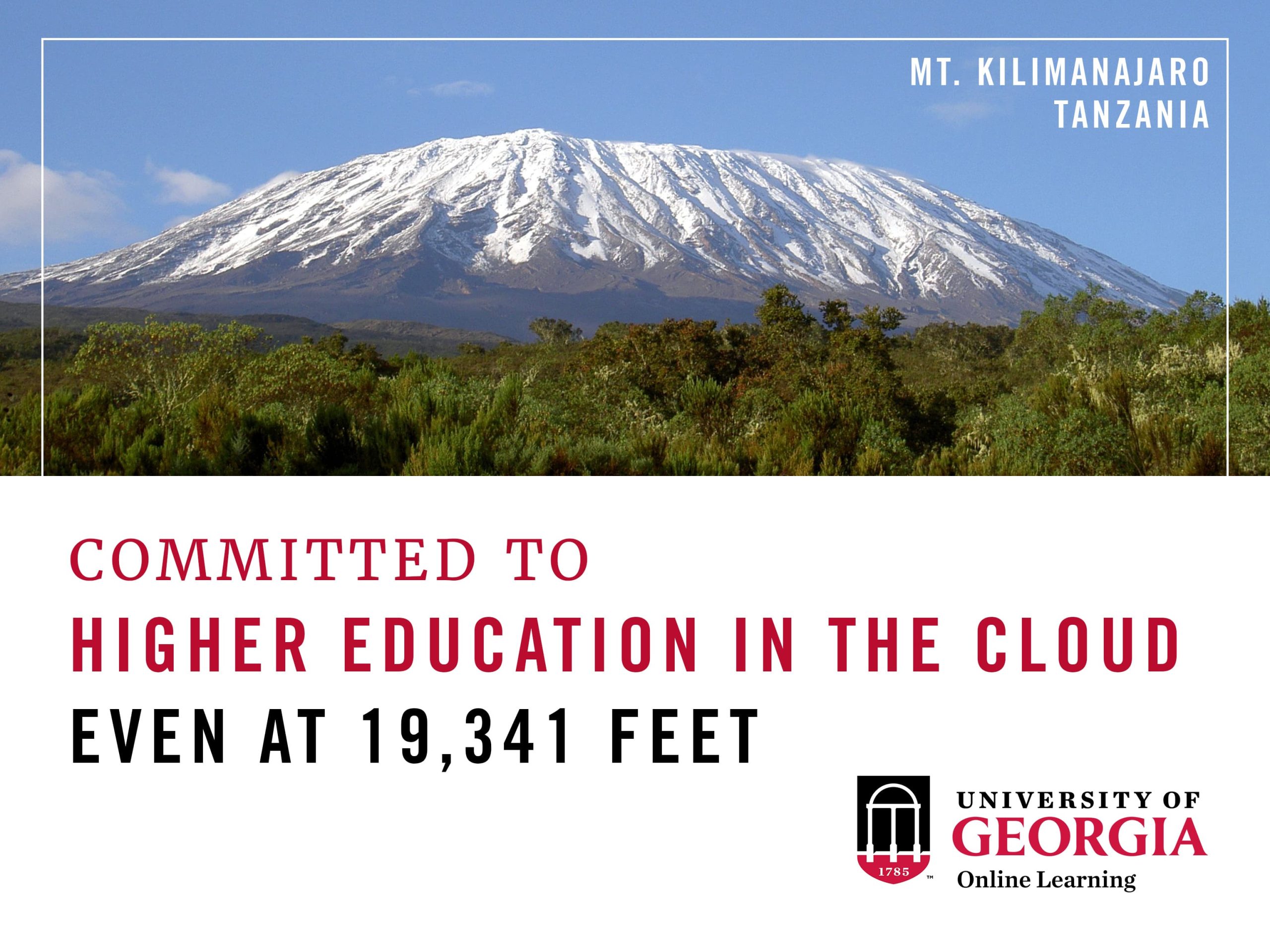How higher education learning gets moving in the cloud
How higher education learning gets moving in the cloud
A 2014 report from the U.S. Department of Education noted that “postsecondary enrollment in distance education courses, particularly those offered online, has rapidly increased in recent years.”
enrollment in distance education courses, particularly those offered online, has rapidly increased in recent years.”
So how are colleges and universities adapting to the increasingly digital world?
Getting physical with online education
University of Georgia (UGA) has brought many lecture-based courses online, but lab-based physical sciences and physical education posed a challenge to the distance-learning environment.
Here at UGA, every student is required take a physical education course to graduate; this presents a problem for students participating in distance learning, pursuing internships, or studying abroad.
In 2013, UGA Kinesiology Professor Ilse Mason developed a program that monitored students’ heart rates remotely using wearable fitness devices. This evolved into the first iteration of UGA’s virtual “Fitness for Life: Walking” course.
The course is specifically targeted at off-campus students, allowing them to successfully complete a PE course regardless of their location. Students learn about fitness-related topics such as physical-activity guidelines, goal setting, exercise programming, and nutrition. They are required to complete a personalized walking regimen and use their own heart-rate data to monitor intensity and progress.
Walking, but not yet running
Mason’s thinking was a major step forward. She managed to tackle a big problem in making PE much more accessible. But, as with any emerging idea, there were some kinks to work out.
While any student in the class could participate regardless of physical location, students faced some technological challenges. For instance, they had to figure out how to manually export data from a fitness tracker and then send that information to their instructor. There was confusion over which report formats and data were supposed to be sent to professors, which ultimately led to professors often receiving unusable student-fitness data.
To fix this, we examined how to make the virtual class more user friendly and the data-collection process easier for both Mason and her students. In partnership with Mason, we built a server-less application that runs on Amazon Web Services (AWS) and is integrated into Fitbit and D2L (formerly Desire2Learn) – a learning management system – to make data uploading seamless and easy.
With the data from every student’s fitness trackers going directly into the cloud, it made both sending and sorting the data much easier. Students didn’t have to guess which information to send, and on the back end, the data was easily sorted for evaluation.
Hitting our stride
After facing glitches in the original plan, we determined that the power of the cloud and the expertise of AWS would give us the tools we needed to provide a better experience for our students. UGA already had a strong relationship with AWS, and cloud computing afforded us ample tools to work with while also being cost-effective.
For the program, UGA did not have access to physical servers, so working with AWS gave us flexibility and a robust set of tools to support our efforts. The open, well-documented and user-friendly API, as well as the server-less architecture provided by AWS Lambda, were a perfect fit because they allowed us to build an application that runs only when needed, which mitigates overhead costs for the class.
Crossing the finish line
Our new online fitness course went live this summer, and our cloud-based physical fitness app works in tandem with student FitBits. With a single click at the beginning of the semester, UGA students anywhere on earth are able to easily and quickly send the right data to their professors without having to manually select or upload reports. Our professors can request data after each class “session” and conduct the necessary analysis.
In addition to implementing the cloud-based system in the walking course, Mason decided to use only freely available open educational resources (OER) for her course content. She developed not only the OER needed for her own virtual exercise course, but also for all physical education courses at UGA, saving about 7,000 students a year the price of costly textbooks.
Standing atop the podium
The work earned Mason a 2016 Creative Teaching award, with UGA commending her for saving students $272,000 in textbook costs.
The class has been a success and the newest iteration has allowed more time for the students to learn. “It’s having real, life-changing impacts for some of these students,” says Mason. “The technology enables us to see what students are doing even when they’re as far flung as Switzerland, South Korea, or Mt. Kilimanjaro. Most important, the cloud-based program is removing data-focused roadblocks and empowering students to focus on physical education.”
This article originally appeared in eCampus News, authored by James Castle and Chuma Atunzu, published on January 10, 2017.
